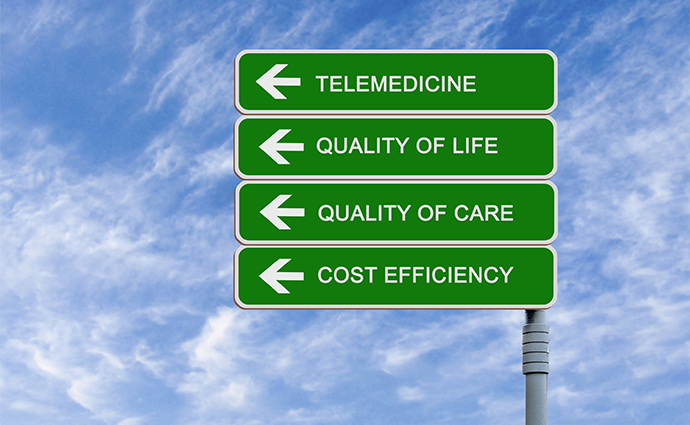Baystate Health Addresses Value-Based Care Gaps With Connected Health
The Massachusetts health system is saving thousands of dollars, reducing ED traffic and boosting clinical outcomes with a mobile integrated health program that sends care teams to selected patients' homes.

Source: ThinkStock
- A hybrid mobile integrated health program launched by Baystate Health in late 2018 averted more than 1,000 emergency department visits and 40 admissions for at-risk patients and saved more than $1,700 per person per visit in just the first year.
The program at the Springfield-based, five-hospital health system, designed to offer on-demand acute care for residents who would otherwise go to the ED and proactive “bridge care” for high-risk patients recently discharged from the health system, is one of the linchpins in Baystate’s value-based care strategy. It offers a model for health systems looking to adopt telehealth and mHealth platforms to boost population health outcomes and reduce ED crowding and unnecessary hospitalizations.
Those concerns are especially important in the midst of a coronavirus pandemic, when hospitals are overtaxed and looking for ways to push care out of the ED and back into the home. Some hospitals have launched connected health programs – including MIH and community paramedicine programs – to specifically treat COVID-19 patients at home, and now they’re looking to modify those platforms to address other populations and care management concerns.
Many MIH programs integrate with local fire, police or EMS services to faciliate home visits, but a growing number of programs are using care teams organized and dispatched by the health system (or a contracted vendor). Advocates say that model works in areas where integration is too costly or complicated, as well as giving the health system full control over the program, perhaps as a stepping stone to later integration with local services.
For Baystate Health, the plan was to reduce unnecessary and costly inpatient treatment, particularly within the health system’s at-risk population. Roughly 170,000 patients are covered by Medicare and Medicaid ACOs or at-risk commercial contracts.
READ MORE: NY City Uses Telehealth to Curb ER Traffic, Improve Care Coordination
“About 60 percent of our primary care revenue is generated from risk,” Andrew Artenstein, MD, the health system’s chief physician executive, said in a case study. “Massachusetts is ahead of the curve in population health; however, we still have a healthy portion of business from fee-based services, but serving risk patients is a clearly a critical component of what we do as an organization.”
Baystate partnered with DispatchHealth to launch its program in December 2018, equipping two service vehicles with telehealth and mHealth equipment to bring care providers to patients, rather than having the health system wait for those patients to call for help or arrive in an ambulance. The care team – a nurse practitioner or physician assistant and an EMT technician – are supplied by DispatchHealth, and have an on-demand virtual link to Baystate providers.
“A versatile population health management program was needed to treat patients effectively within our local communities,” Amy Roy, director of clinical integration at Baycare Health Partners, said in the case study. “We've been challenged with high ED utilization in our population for a very long time. We tried leveraging various approaches through care management, provider practice focus and increasing access, but we still come back to the same issue.”
MIH and community paramedicine are still relatively new concepts, not really on the reimbursement radar for the Centers for Medicare & Medicaid Services. Health systems trying out the strategy are focused mostly on reducing readmissions, particularly among “frequent flyers,” or patients identified as often needing medical intervention.
The challenge is to find a model that produces measurable value for both the health system and the patient population, and to make it sustainable.
READ MORE: California Gives Telehealth a Try with Community Paramedicine Legislation
According to Baystate’s case study, the health system has logged 3,436 total patient encounters, 1,511 of which were in the value-based care program. Almost 64 percent of the total visits and 70 percent of the VBC visits ended without an ED visit, and about 22 percent avoided an emergency transport. Roughly 12 percent of the visits averted a hospital admission for observation, and roughly 2.5 percent avoided a hospital admission.
The program also helped the health system address social determinants of health. It addressed challenges like lack of transportation or access to care, prescription costs and medication adherence, all of which can contribute to higher, and unnecessary, medical costs in at-risk populations.
Finally, the savings: According to the case study, the MIH program helped Baystate save $1,729 per visit for the health system’s VBC program patients.
The success of programs like Baystate Health’s could spur more health systems to launch MIH or community paramedicine services, particularly as the nation’s healthcare industry looks to move away from fee-for-service care and closer to VBC.
Baystate officials say they plan to integrate the program into its electronic health record and electronic medical record platforms, giving providers the opportunity to refer patients for care.
Through the program, “primary care physicians, skilled nursing and long-term care facilities in Baycare’s network can provide patients with improved access to quality acute care, and Baystate can deliver critical services to local community centers,” the case study concludes. “The partnership helps to strengthen physician liaisons and encourage engagement with DispatchHealth’s services, which ultimately reduces ED visit volume at Baystate’s facilities.”
